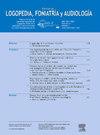Enhancing communication and behavioral skills in Spanish-speaking children with autism spectrum disorder using SymboTalk and EC+: A pilot study
Q3 Nursing
引用次数: 0
Abstract
Introduction
Autism spectrum disorder (ASD) is a neurological condition that impacts receptive and expressive communication as well as behavior. In this context, augmentative and alternative communication (AAC) strategies are increasingly integrated with information and communication technologies (ICT). ICT supports have significantly advanced AAC interventions, incorporating tools, software, and digital apps to facilitate information processing in educational and therapeutic settings. Despite the benefits, the wide range of these supports raises concerns about proper usage and optimal alignment with specific needs.
Method
This pilot study evaluated the impact of an intervention with two different AAC with assistance (AAC+a) on 40 participants with ASD Level 3 within a Spanish-speaking context: communication board from the SymboTalk platform and list-form from the multimodal EC+ app. These supports were implemented using the aided augmented input strategy, an intervention methodology that utilizes these supports to facilitate functional communication by combining visual and oral input.
Results
After 16 weeks, significant improvements in expressive and receptive communication were observed using the communication board support, although the other resource also proved to be a favorable support for the intervention. No differences were found between groups in behavioral outcomes and modes of communication.
Conclusions
The results highlight the effectiveness of these supports, emphasizing the importance of teaching communication skills and implementing this strategy in a Spanish-speaking context. This consideration is crucial given the unique characteristics of this context and its potential impact on children with ASD and complex communication needs.
使用SymboTalk和EC+提高西班牙语自闭症谱系障碍儿童的沟通和行为技能:一项试点研究
自闭症谱系障碍(ASD)是一种影响接受性和表达性沟通以及行为的神经系统疾病。在此背景下,增强型和替代性通信(AAC)战略日益与信息通信技术(ICT)相结合。信息通信技术支持大大推进了AAC干预措施,包括工具、软件和数字应用程序,以促进教育和治疗环境中的信息处理。尽管有这些好处,但这些支持的广泛范围引起了对正确使用和与特定需求的最佳对齐的关注。本试点研究评估了在西班牙语环境下,使用两种不同的AAC辅助干预(AAC+a)对40名ASD 3级参与者的影响:SymboTalk平台的交流板和多模态EC+应用程序的列表形式。这些支持使用辅助增强输入策略实施,这种干预方法利用这些支持通过结合视觉和口头输入来促进功能性交流。结果16周后,使用交流板支持,观察到表达性和接受性沟通有显著改善,尽管其他资源也被证明是对干预的有利支持。在行为结果和交流方式上,各组之间没有发现差异。结论:研究结果突出了这些支持的有效性,强调了在西班牙语环境中教授沟通技巧和实施这一策略的重要性。考虑到这种情况的独特特征及其对自闭症儿童和复杂沟通需求的潜在影响,这一考虑至关重要。
本文章由计算机程序翻译,如有差异,请以英文原文为准。
求助全文
约1分钟内获得全文
求助全文
来源期刊

Revista de Logopedia, Foniatria y Audiologia
Nursing-LPN and LVN
CiteScore
1.10
自引率
0.00%
发文量
28
 求助内容:
求助内容: 应助结果提醒方式:
应助结果提醒方式:


